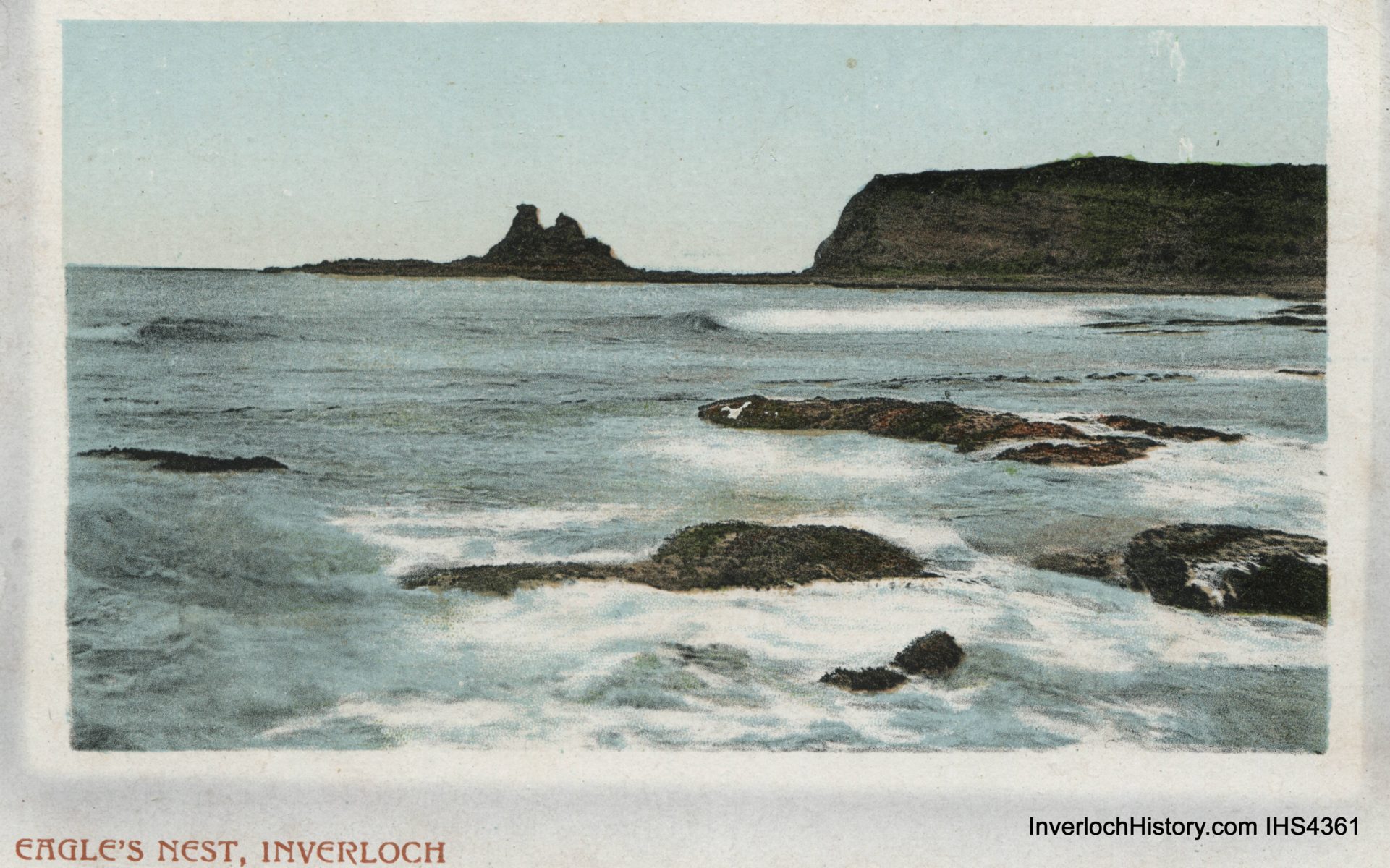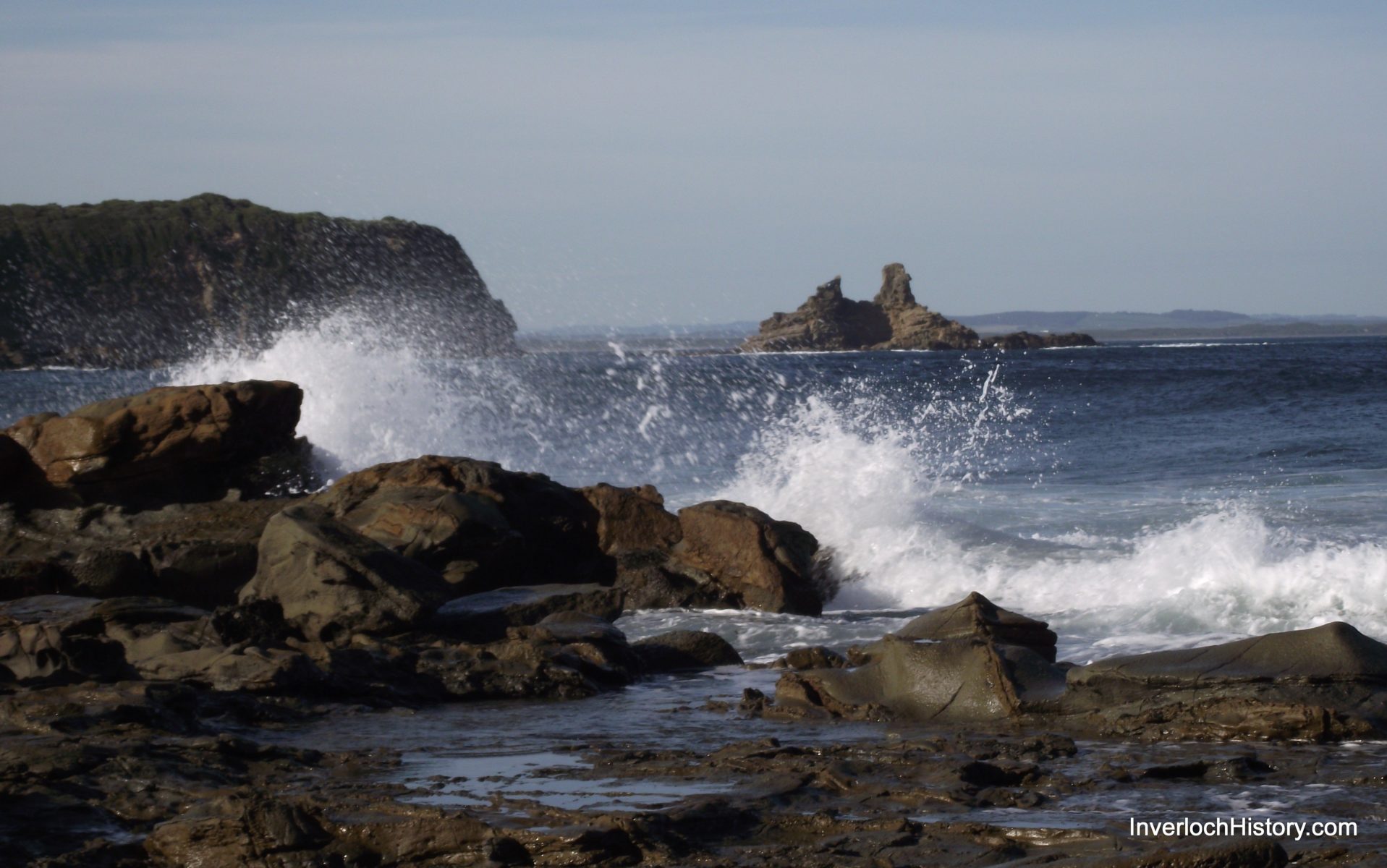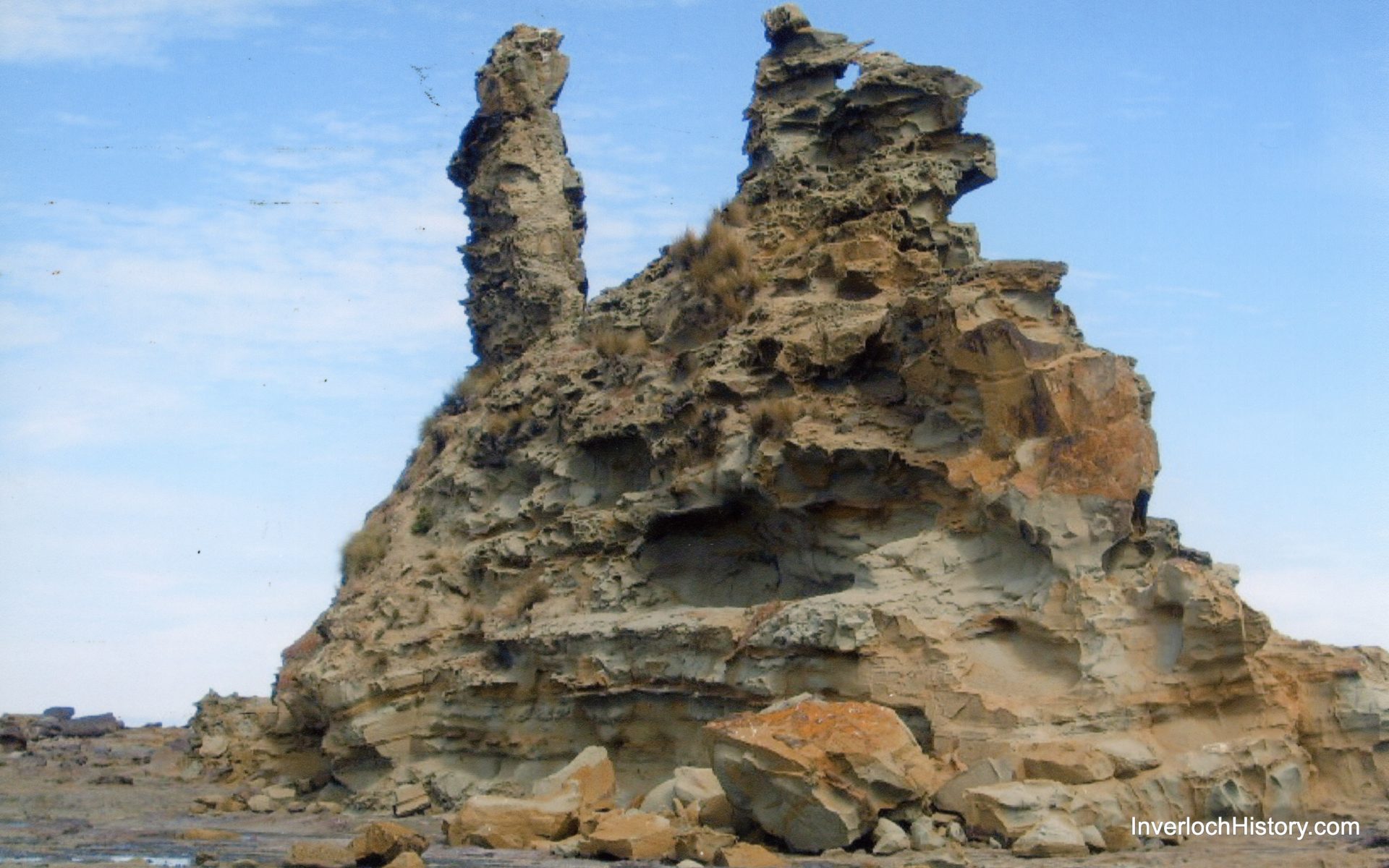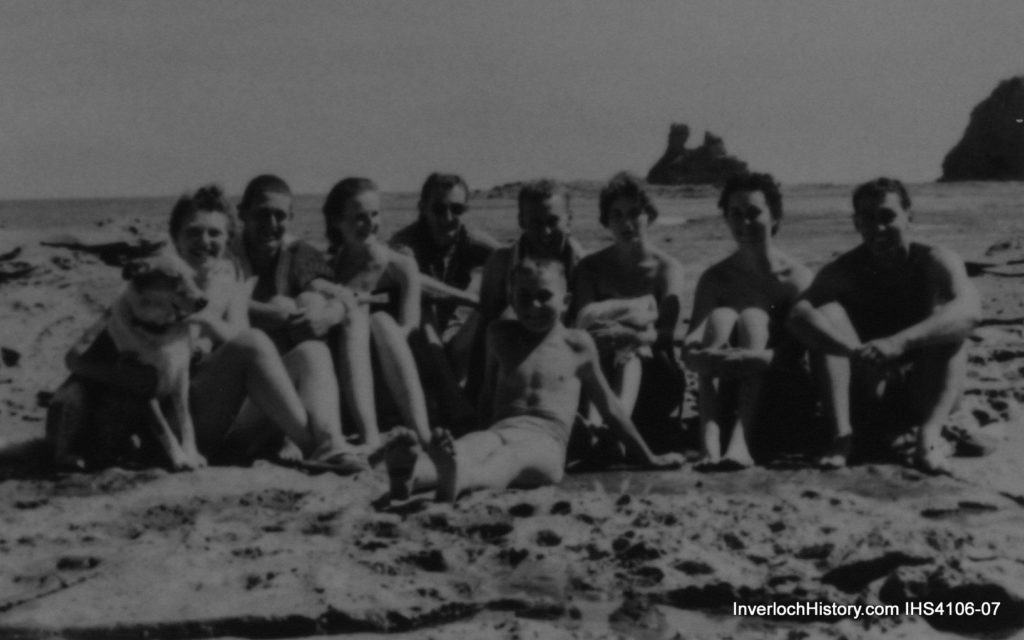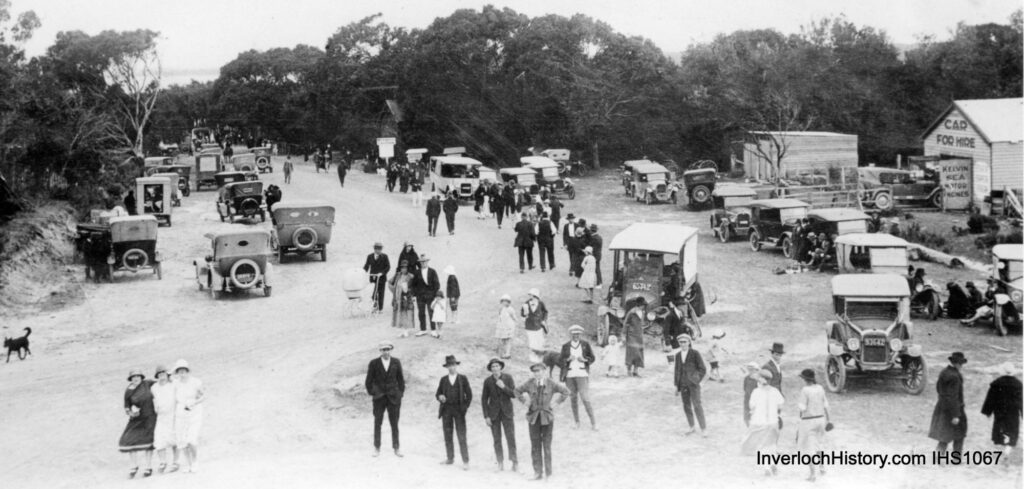Although several kilometres around the Bunurong Coast road towards Cape Paterson, Eagles Nest is seen as part of Inverloch. The unusual rock formation separated from the headland is clearly seen and often photographed by visitors to Inverloch. The Bunurong Coast Road is described by some people as “Our Little Great Ocean Road”, wending its way from Inverloch to Cape Paterson, with many attractive places to stop and visit the beach and to inspect the fascinating rocks and native vegetation. In earlier years there were some half-hearted attempts to subdivide the land near Eagles Nest to form what might have been a small township, but happily, for us all, that did not happen. Another attempt in the area was to set up a sewerage farm on the land near Eagles Nest. This also failed, but a modified scheme further inland, but still in the Bunurong area, is currently in operation.
Any rock formation on a coastline is always highly photographic, and Eagles Nest is no exception. The Bunurong coast road permits the photographer to get some fine pictures of the formation. However, to get close up and find a new angle requires walking down the beach and across the rocks, which can be hazardous and even treacherous, especially when high tide takes place.
Obviously, the rock is wearing down and changing, how quickly – well, nobody knows! Climbing Eagles Nest is a very hazardous and highly dangerous undertaking, but young men during the Edwardian Era would climb it to scratch their names near the top! This is a big no-no now!
The Bunurong coastline encompasses some of the most charming and beautiful places to visit, where Mother Nature displays her wares in all their glory, allowing the holiday maker and permanent residents to relax and glory in what they see. For our environmental protection, one cannot pick or interfere with the plants, trees and bushes of any kind. Simply photograph them for your continued enjoyment. Similarly, when investigating the rocky coastline and waters edge, always return the rocks to their original position.
Fishing is not permitted along the Bunurong coast. Thoughtful and common sense care will help preserve the environment for ages to come.
